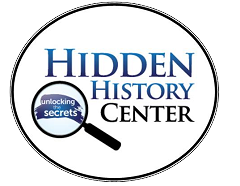 We are incorporated as the Museum of Hidden History, a 501(c)(3) non-profit organization. Our primary project is a library and research facility called the Hidden History Center.
We are incorporated as the Museum of Hidden History, a 501(c)(3) non-profit organization. Our primary project is a library and research facility called the Hidden History Center.
Our vision for the Hidden History Center involves more than a library and archive. We intend to create a dynamic, exciting information hub. We plan a four-stage approach to accomplishing this goal:
STAGE 1: WEBSITE DEVELOPMENT
We plan to leverage this vibrant, engaging new web presence for the Hidden History Center. Along with establishing a Secure Sockets Layer to enhance security and boost search results ranking, the site redesign, in the works for over two years, launched on 15 June 2018. We now have the requisite highly unique foundation to draw in significant interest and generate increasing traffic. To build on this, much work will be involved in producing compelling and relevant content, in addition to constant site maintenance and monitoring.
Amie Tracey, a highly knowledgeable web technologist, has been working with our Assistant Director Dave Ratcliffe, who is contributing most of our website’s content, as well as links to other sources. With Amie’s able guidance and assistance, the just-completed major site upgrade implements a new WordPress theme with contemporary look-and-feel that imbues a lustrous gleam to our work. In addition, it provides a much more cogent, intuitive, and accessible navigation hierarchy of Our Unknown and Forgotten History.
Our long-term goal is to have our website serve as a beacon, providing an ever-expanding, unique repository and dynamic archival trove of essential historical sources and references. Our focus is to assemble evermore compelling, information-rich compilations presenting incisive, provocative critical and contextual analysis of how the political, social, and economic dimensions of our world actually operate and interconnect, and how what occurred in the past has resulted in present conditions and commensurate future challenges faced by the human project.
STAGE 2: INTERNSHIP PROGRAM
 In cooperation with York College, we have developed an internship program at the Hidden History Center in York, PA, to enrich the educational experiences of students of history, political science and intelligence service. Students are able to acquire course credits for their involvement in cataloging our collection of archival documents.
In cooperation with York College, we have developed an internship program at the Hidden History Center in York, PA, to enrich the educational experiences of students of history, political science and intelligence service. Students are able to acquire course credits for their involvement in cataloging our collection of archival documents.
In approaching our Jonestown Massacre collection, for example, students were assigned to research the subject online and make lists of subheadings that might be used for file folder names. They were also asked to review a lengthy, annotated article about the event written by our founder, John Judge. After acquiring this familiarity, they worked with our Executive Director, Marilyn Tenenoff, to sort through all the documents in the collection and put them in appropriately-labeled file folders. A list of all the folder names was then created, so that it could be posted on our website.
Overall, the students acquired new knowledge, developed their research skills, and made several surprising discoveries among the documents. We plan to expand our Internship Program to other nearby colleges and universities.
STAGE 3: ORGANIZING AND DIGITIZING
Our most important task at the Hidden History Center’s physical library and research facility will be to identify more specifically exactly what the collection contains.
 As for the books in the collection, only one section (the McGehee Library) has been partially inventoried. All the remaining books still need to be inventoried and assigned to classification categories. Volunteers and interns will continue to work on this process. It is essential to have a complete book inventory, both for insurance purposes and for posting online, where it can be consulted by researchers.
As for the books in the collection, only one section (the McGehee Library) has been partially inventoried. All the remaining books still need to be inventoried and assigned to classification categories. Volunteers and interns will continue to work on this process. It is essential to have a complete book inventory, both for insurance purposes and for posting online, where it can be consulted by researchers.
Our intention is to eventually digitize the archival documents. We have a simple digitizing wand, and our Assistant Director, Dave Ratcliffe, has generously donated two document scanners.
We may hire a consultant to advise us how to proceed, but we will rely on volunteers and interns to do most of the actual work.
STAGE 4: OUTREACH, SOCIAL MEDIA AND FUNDRAISING
 Stage 4 of the Hidden History Center project is to create a means for like-minded people to interact with each other, using social media and community outreach events on hidden history themes.
Stage 4 of the Hidden History Center project is to create a means for like-minded people to interact with each other, using social media and community outreach events on hidden history themes.
In 2016, we established our social media presence, including Facebook and Twitter, as well as a Mail Chimp mailing list. We will continue to develop these features and look for additional venues and opportunities to increase the Hidden History Center’s visibility and name recognition.
We also plan to seek additional assistance from a professional fundraiser, to expand our base of financial support, and we will continue to use our new Mail Chimp mailing list to fundraise and to offer updates on Hidden History Center activities.
We intend to use social media to establish collaborative, cooperative groups, and to eventually set up an infrastructure for real-time information exchange. As always, John Judge’s authenticity will serve as the foundation for these groups, empowering them to address present-day issues based upon historical knowledge.
In sum, we intend to develop a research center, an internship program,
a website and a social media presence that would make John Judge proud.
We believe he would be gratified to see his ideas germinate, thrive and spread.

